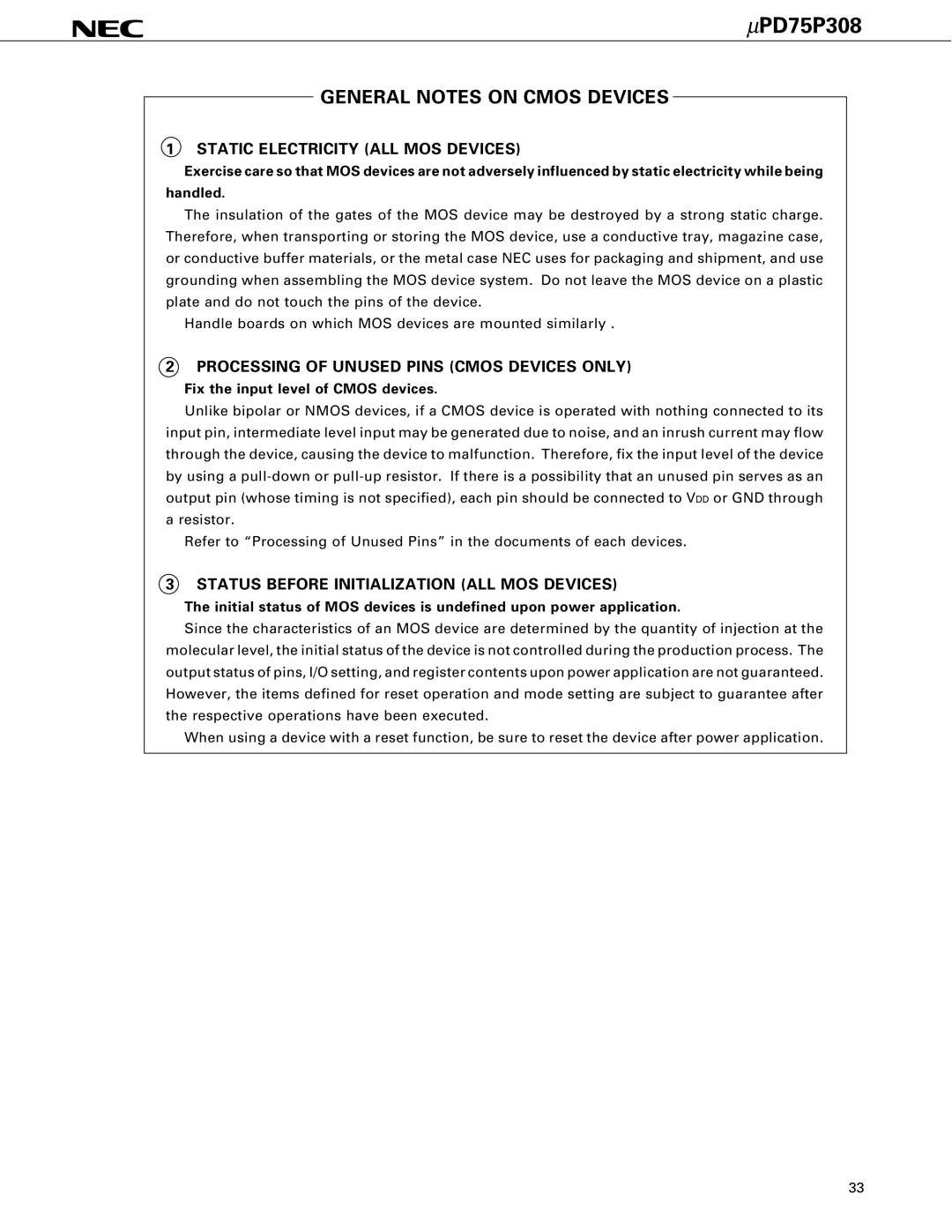
μPD75P308
GENERAL NOTES ON CMOS DEVICES
1 STATIC ELECTRICITY (ALL MOS DEVICES)
Exercise care so that MOS devices are not adversely influenced by static electricity while being
handled.
The insulation of the gates of the MOS device may be destroyed by a strong static charge. Therefore, when transporting or storing the MOS device, use a conductive tray, magazine case, or conductive buffer materials, or the metal case NEC uses for packaging and shipment, and use grounding when assembling the MOS device system. Do not leave the MOS device on a plastic plate and do not touch the pins of the device.
Handle boards on which MOS devices are mounted similarly .
2 PROCESSING OF UNUSED PINS (CMOS DEVICES ONLY)
Fix the input level of CMOS devices.
Unlike bipolar or NMOS devices, if a CMOS device is operated with nothing connected to its input pin, intermediate level input may be generated due to noise, and an inrush current may flow through the device, causing the device to malfunction. Therefore, fix the input level of the device by using a
Refer to “Processing of Unused Pins” in the documents of each devices.
3 STATUS BEFORE INITIALIZATION (ALL MOS DEVICES)
The initial status of MOS devices is undefined upon power application.
Since the characteristics of an MOS device are determined by the quantity of injection at the molecular level, the initial status of the device is not controlled during the production process. The output status of pins, I/O setting, and register contents upon power application are not guaranteed. However, the items defined for reset operation and mode setting are subject to guarantee after the respective operations have been executed.
When using a device with a reset function, be sure to reset the device after power application.
33
